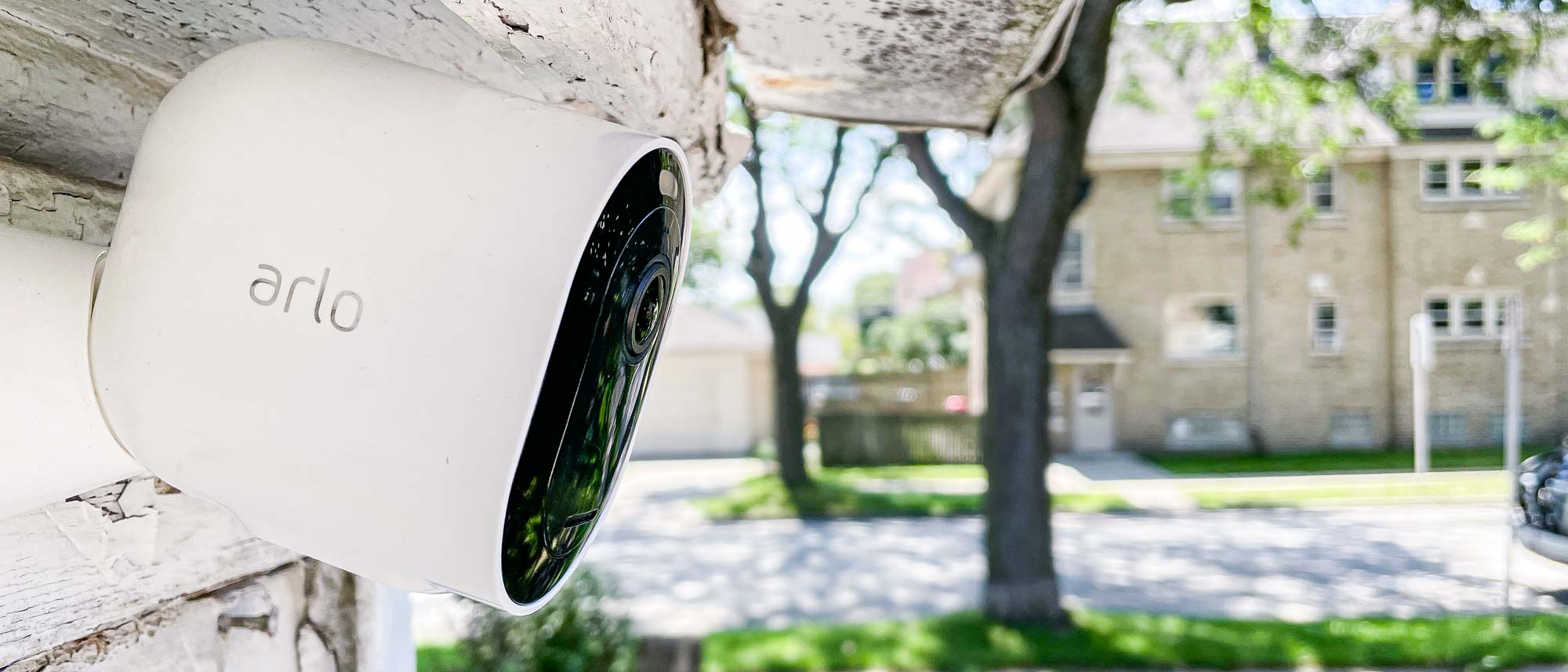Tom's Guide Verdict
The Arlo Pro 4 provides a mostly great user experience with nice features, but if you prefer local storage, this is probably not the camera for you.
Pros
- +
Clean, user-friendly app
- +
Slick camera design
- +
Removable Battery
- +
Good video quality
- +
Very configurable
Cons
- -
Poor HomeKit support
- -
Limited non-subscription feature set
- -
Proprietary charging cable
- -
Live video loads slowly
Why you can trust Tom's Guide
Size: 3.5 x 2.1 x 3.1 inches
Camera Resolution: 2K (2560x1440)
Field of View: 160-degree diagonal max
Spotlight: 6500K, 42 Lux @ 1M
Battery Life: Up to 6 Months
WiFi Connectivity: 802.11 b/g/n @ 2.4 GHz
Audio: Full Duplex 2-way Audio
Operating Temperature: -5°F to 113°F (-20°C to 45°C)
The Arlo Pro 4 is a solidly-built, user-friendly, high-resolution security camera comparable to Ring’s higher-end cameras—by default, it is little more than a live-streaming device and motion sensor, but with the addition of one of a subscription plans, you can add cloud storage for as little as $2.99/month. The key difference, however, is that, for a little extra money, users can add local storage to their camera via Arlo’s SmartHub or Base Station, largely obfuscating the need for a monthly fee (although, certain other features remain unavailable without a subscription).
In other ways, the Arlo distinguishes itself from competitors with a unique magnetic mount, satisfying construction, broader field of view than many, and a pleasant app experience. Read the rest of our Arlo Pro 4 review to see if this is the security camera for you.
- Best home security cameras
- For outside your house, check out the best outdoor security cameras
Arlo Pro 4 Review: Price and Availability
The Arlo Pro 4 is priced at $199.99, although it has occasionally gone on sale for $179.99. Unlike its predecessor, the Arlo Pro 3, the Pro 4 can operate without a hub or bridge, but is otherwise identical. It can be bought straight from their website with free shipping, or you can get it from the usual major retailers like Amazon, Best Buy, and Newegg, for about the same price. Also available are a number of accessories, like the Solar Panel Charger ($59.99,) Dual Charging Station ($49.99) for separate battery charging, and a selection of extra magnetic charging cables of varying lengths. You can even pick up a camouflage housing ($29.99) so you can make your camera extra sneaky!
Arlo Pro 4 Review: Design and Installation
Generally speaking, most of the cameras out there right now look pretty similar. Generally, mounting solutions involve a ball joint that lets you point the camera where you’d like, and this is an available solution for the Arlo Pro 4 as well, but its default configuration sets it apart: it comes with a strong magnetic base that makes mounting just a little easier—no need to screw it on or futz with sliding it into place. Convenient as it is, of course, it’s also quite a bit easier to steal, so for an outdoor installation, you may choose the outdoor mount for $24.99 or the locking $49.99 Total Security Mount, if you’re particularly concerned about theft. Affixing the magnetic base to the wall only requires one screw and a tiny bespoke plastic piece that lets it slide into place.
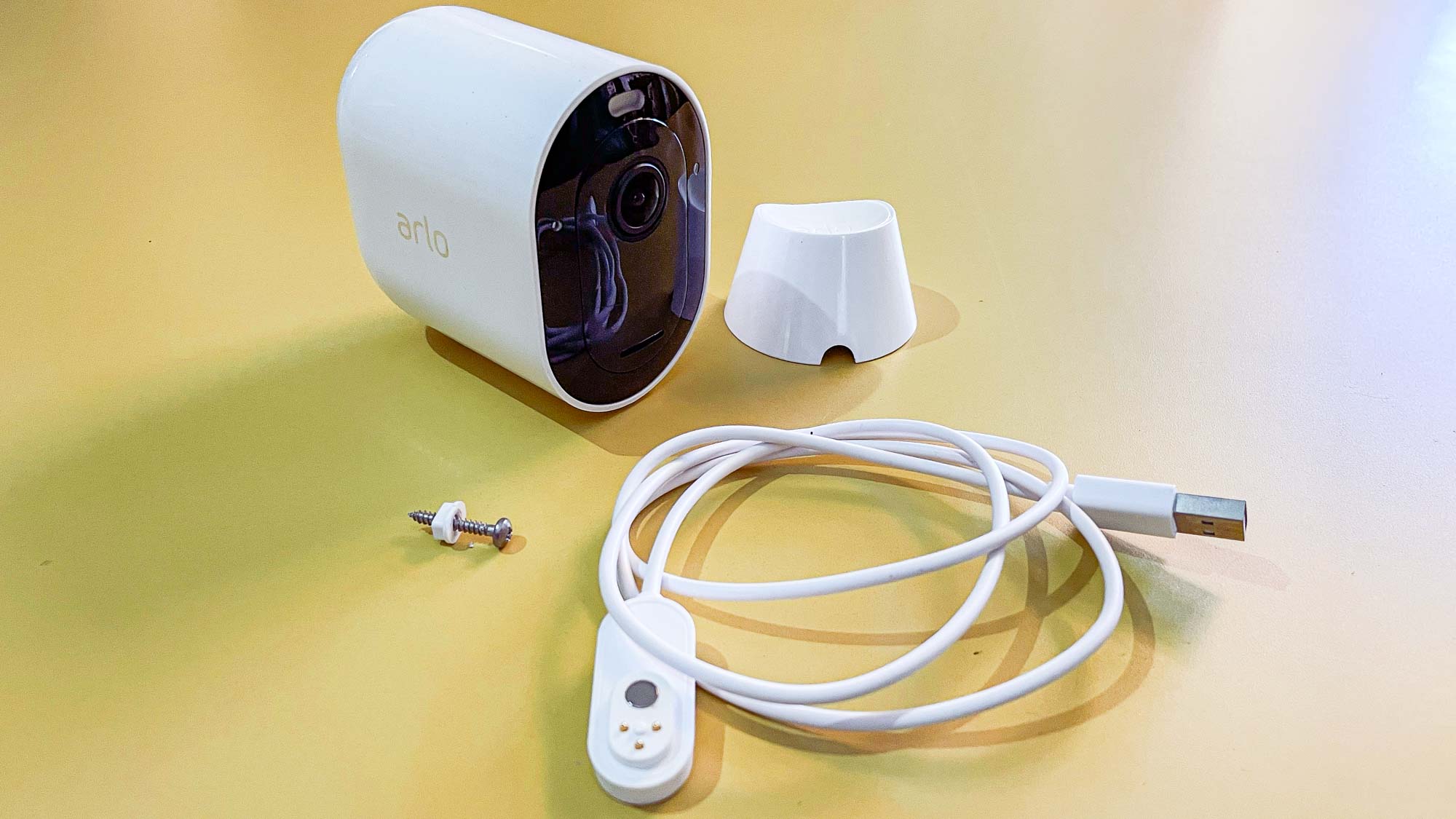
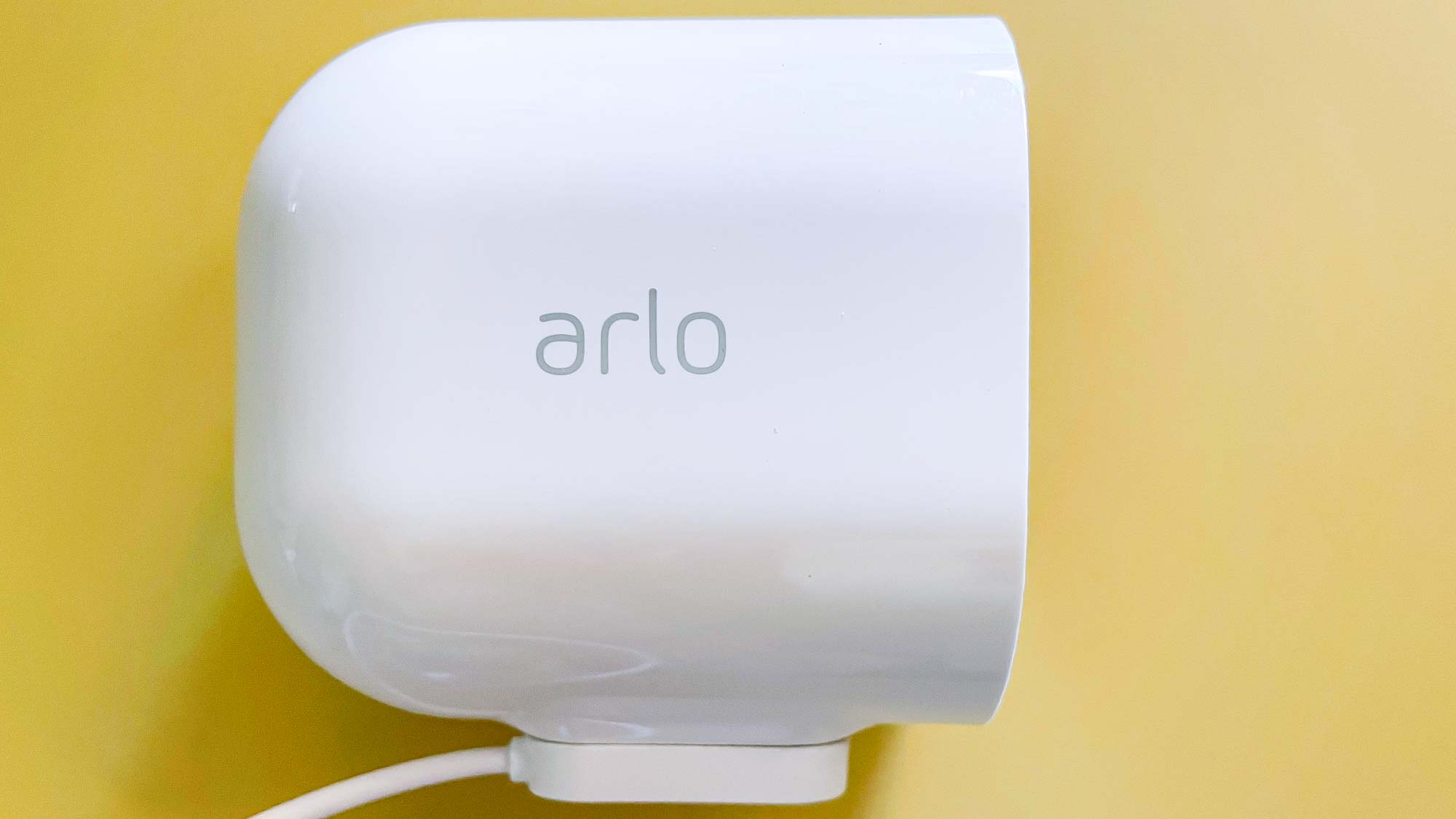
The camera itself is a very nice-feeling unit. It’s heftier than most, and clicks satisfyingly when you press the release on the bottom to remove the body from the shell and swap the battery out for a freshly-charged one (provided you’ve bought another battery and the Arlo charging dock). Of course, you don’t have to remove it to charge the battery — the Arlo Pro 4 comes with a magnetic charging cable that easily affixes itself to the bottom of the unit, the other end plugging into a USB charging adapter, which is not included. It’s a neat little cable, but it’s also tiny and would be extremely easy to lose; its proprietary nature means that if Arlo stops selling that specific cable, finding a replacement in the future could be problematic. Still, the versatility of the camera’s charging options is pretty unique and pretty well mitigates this issue, to me.
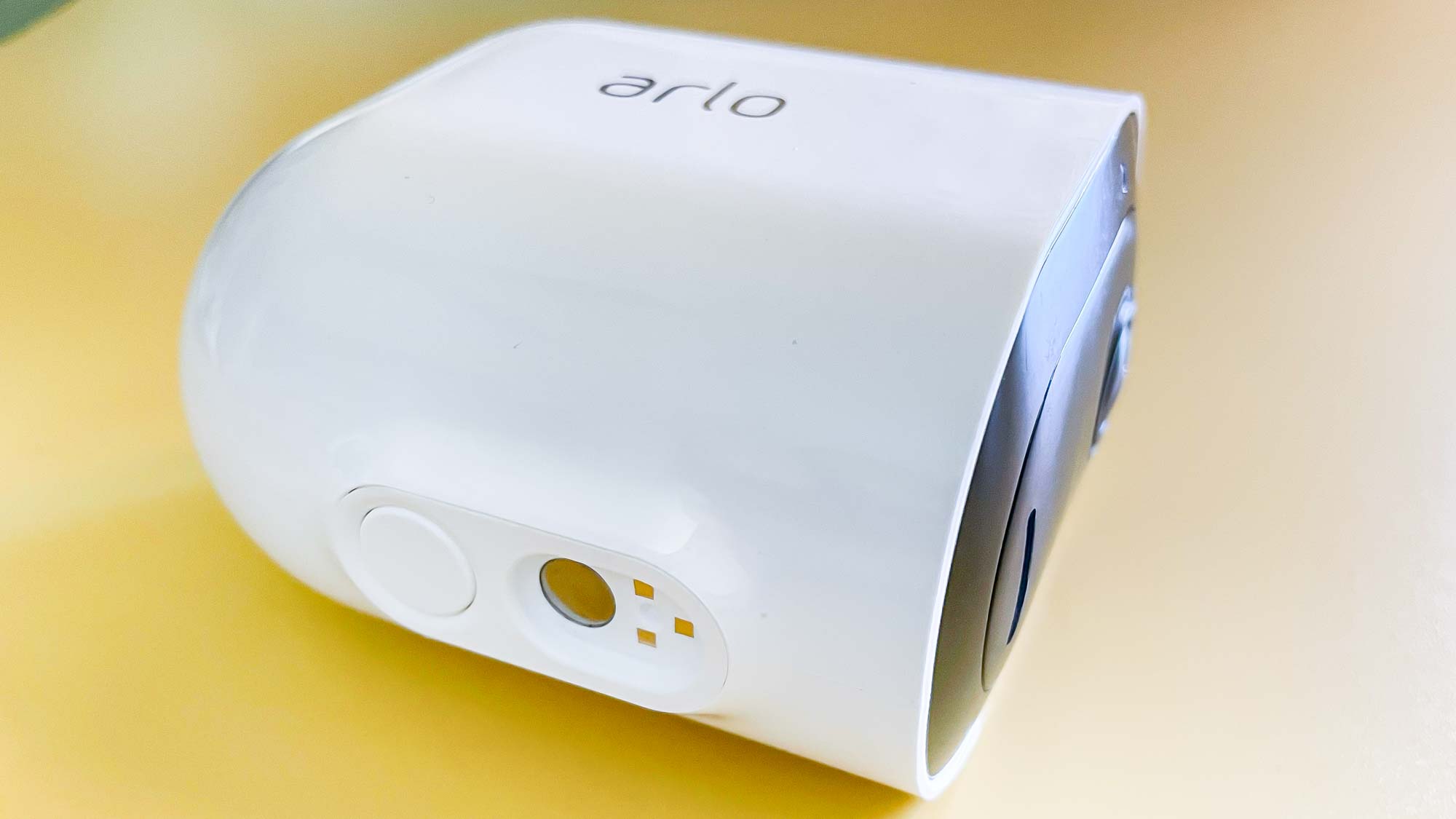
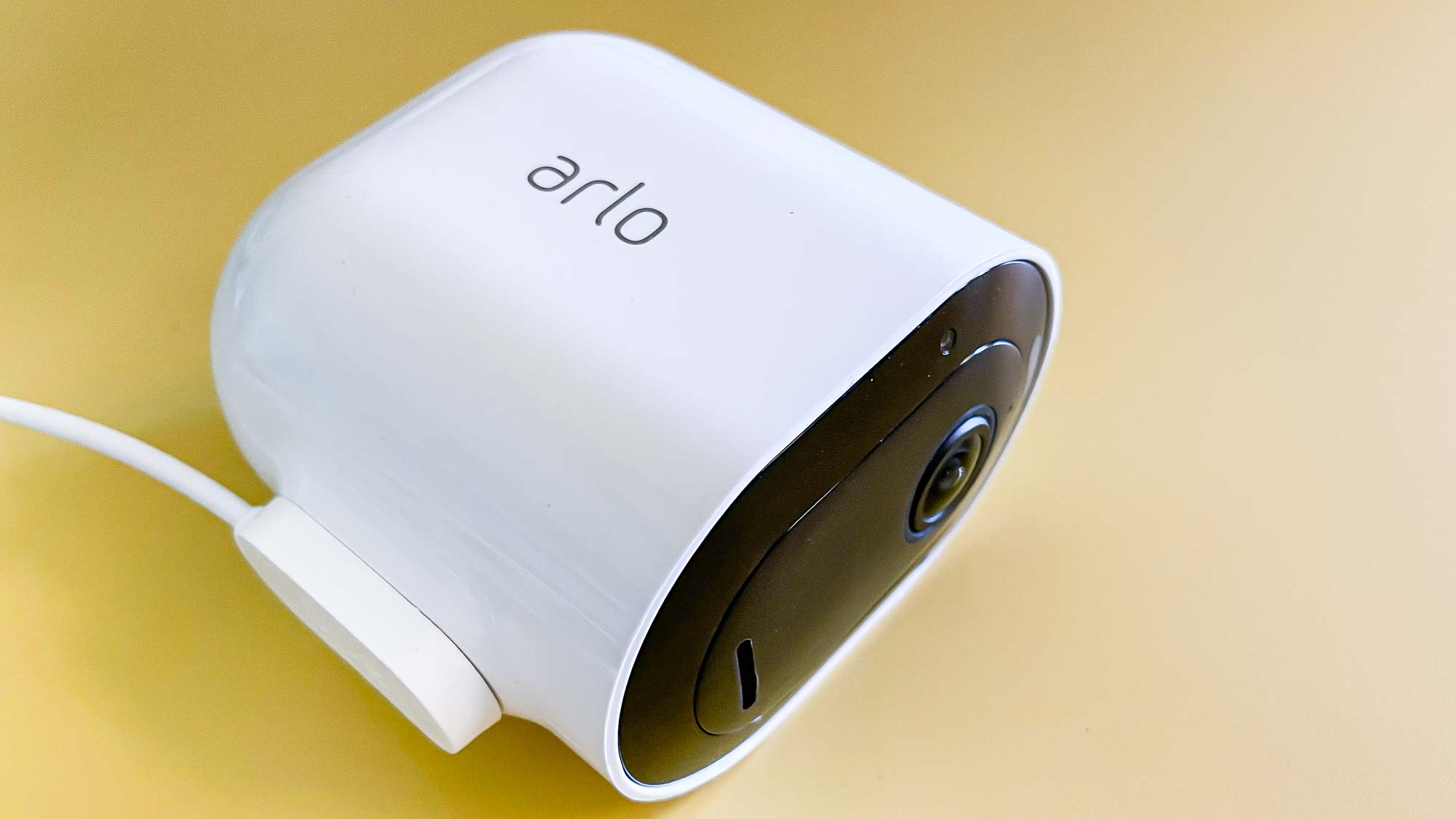
Arlo says the camera is outdoor UV and weather-resistant, and rated to operate in a temperature range of -4°F to 113°F. Although Arlo doesn’t supply the camera’s IPX rating, it certainly seems built to withstand standard weather conditions.
Arlo Pro 4 Review: Video Quality
A security camera, particularly at this price, ought to provide high-quality video. Relative to other security cameras, the Arlo Pro 4 succeeds, but it continues to suffer from the limitations imposed upon it by the need to account for high-latency, low-bandwidth connections. As such, you can expect videos recorded to be full of artifacts and smeary details, but details are definitely on the sharper end for security cameras, thanks to its 2K resolution. With default settings, colors are generally a bit on the muted side, and the camera has nice color reproduction at night when the spotlight is active.
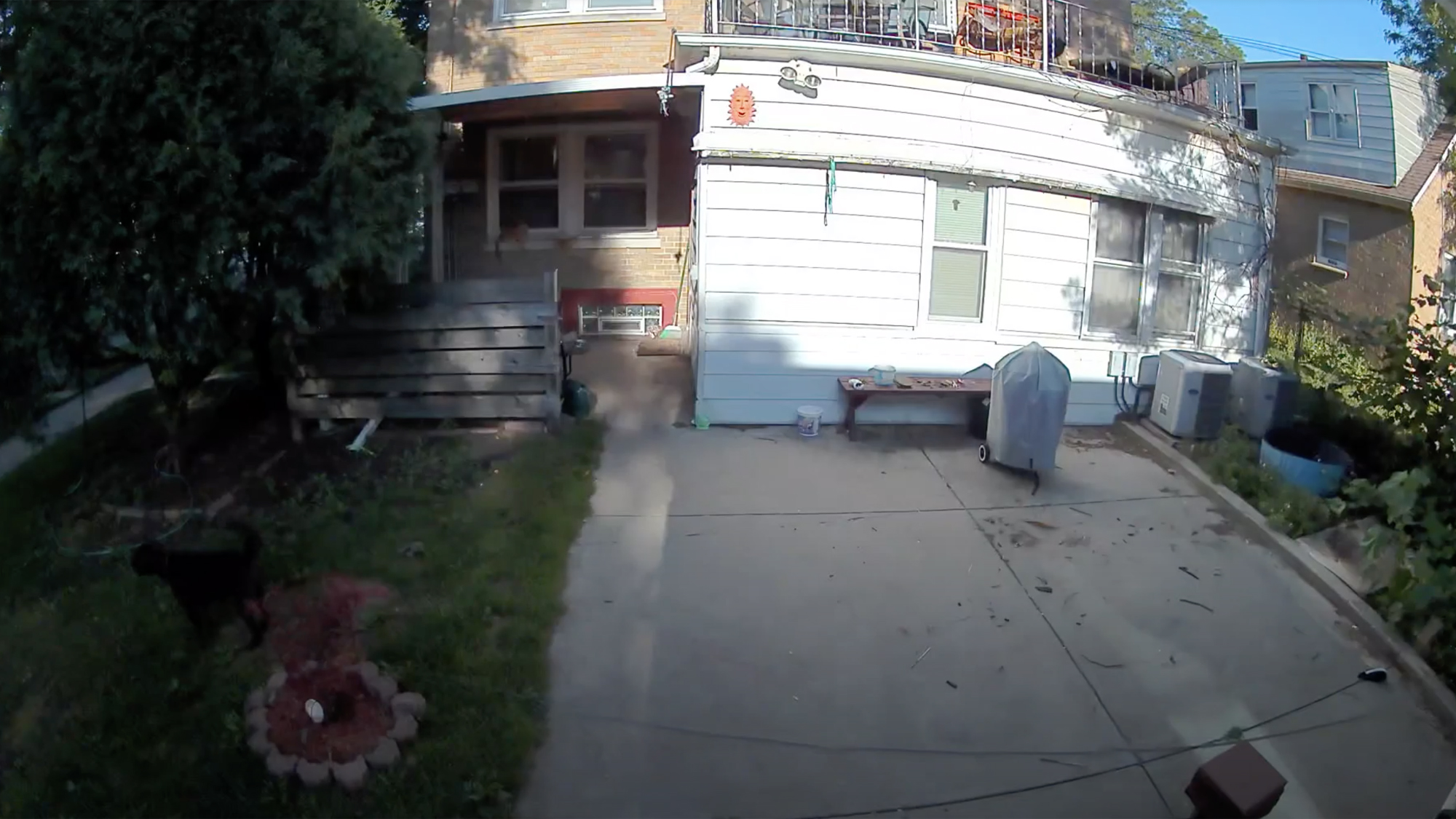
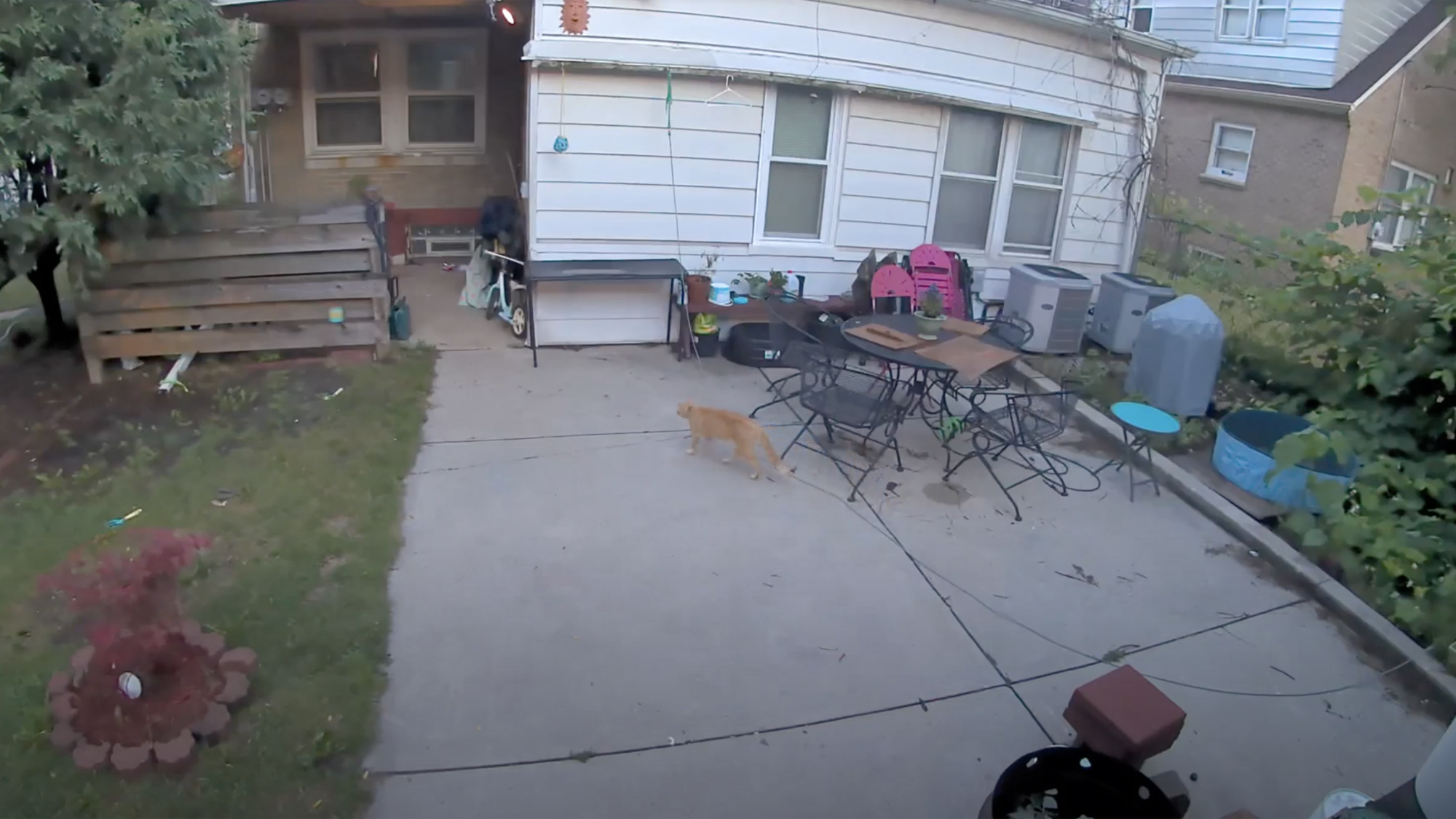
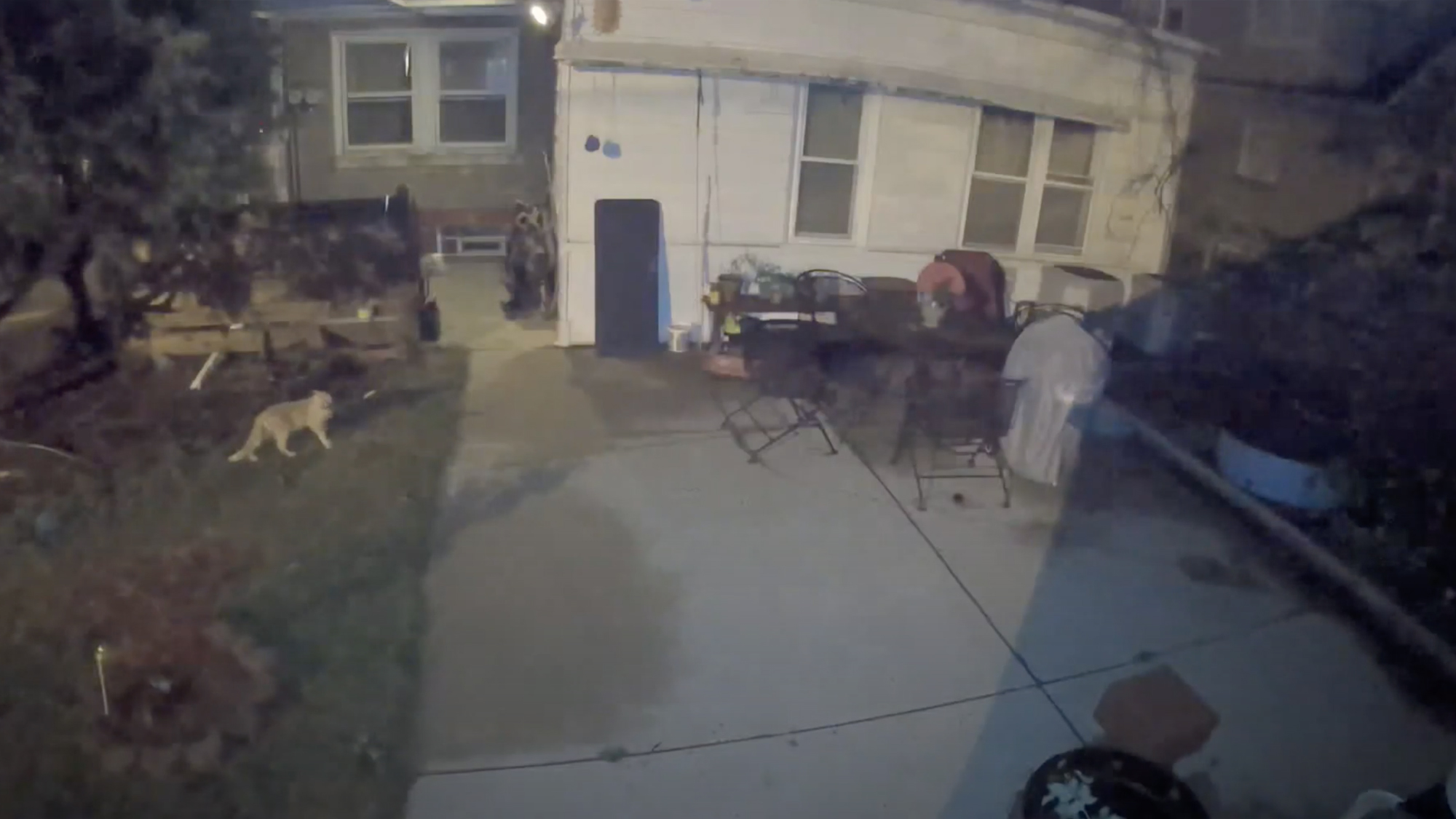
At night, the image becomes expectedly much muddier and loses a lot of the detail you would expect during the day, even with the IR light or spotlight on. Still, I liked how it handled shadows, with darker areas’ brightness elevated to bring out more detail, there. It does seem to come at the cost of detail in brighter areas of the frame, but I believe it’s a good trade-off, depending on the placement of the camera.
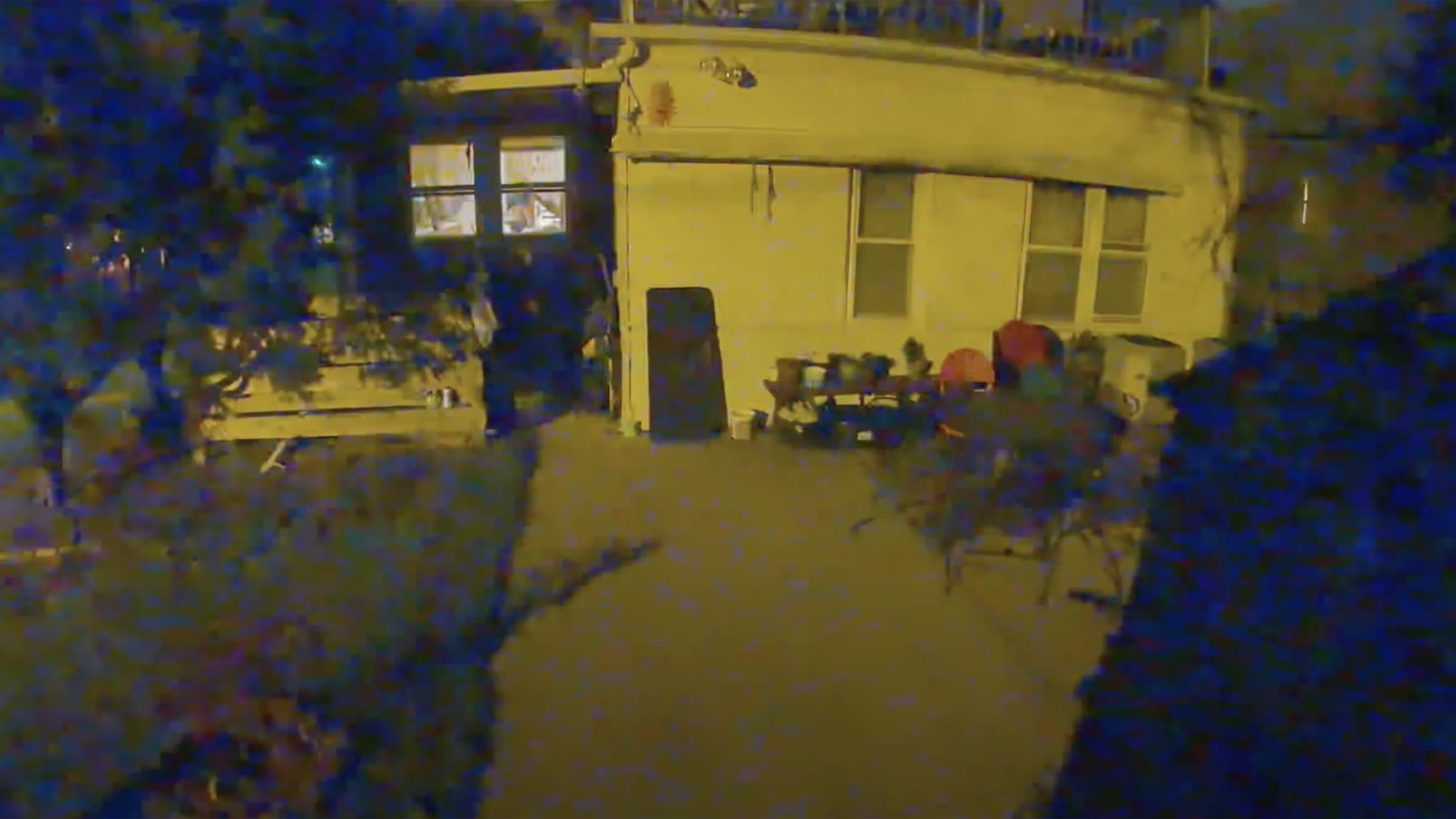
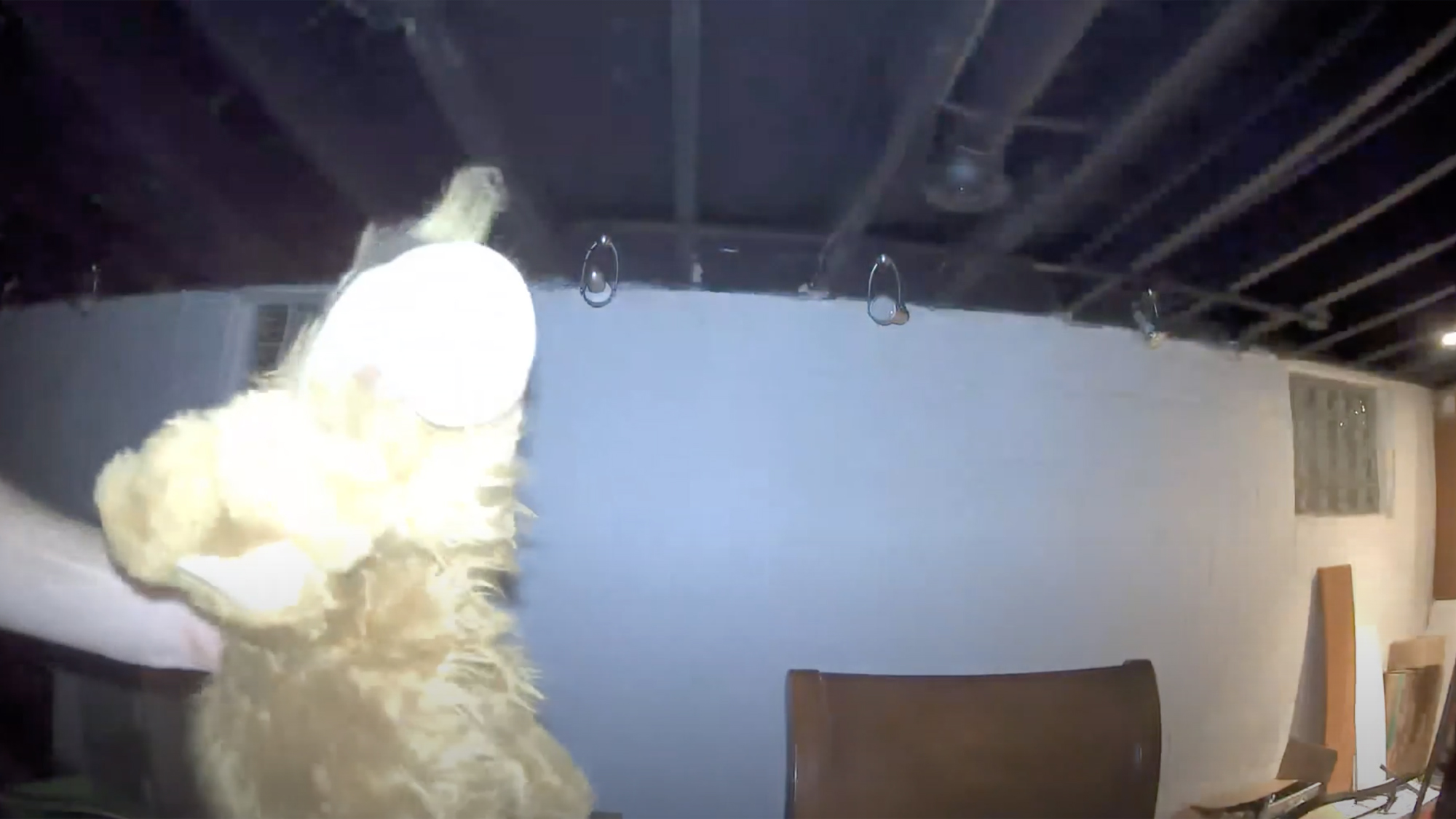
Pleasantly, Arlo provides a wealth of options for adjusting video, with a brightness slider, Auto HDR toggle, three field-of-view options from 110° to 160°, power management settings, as well as low light settings that cover color, night vision, brightness, and spotlight toggle. You can also flip the video’s vertical axis and toggle a feature called Auto Zoom & Tracking, which digitally zooms and pans to follow individuals or animals that it detects—it’s a neat trick, but I’m not sure it brings a great deal of value. It can be disorienting to watch with multiple people in the frame, as the camera tries to split time between them, rather than just sitting back and capturing everyone in the frame.
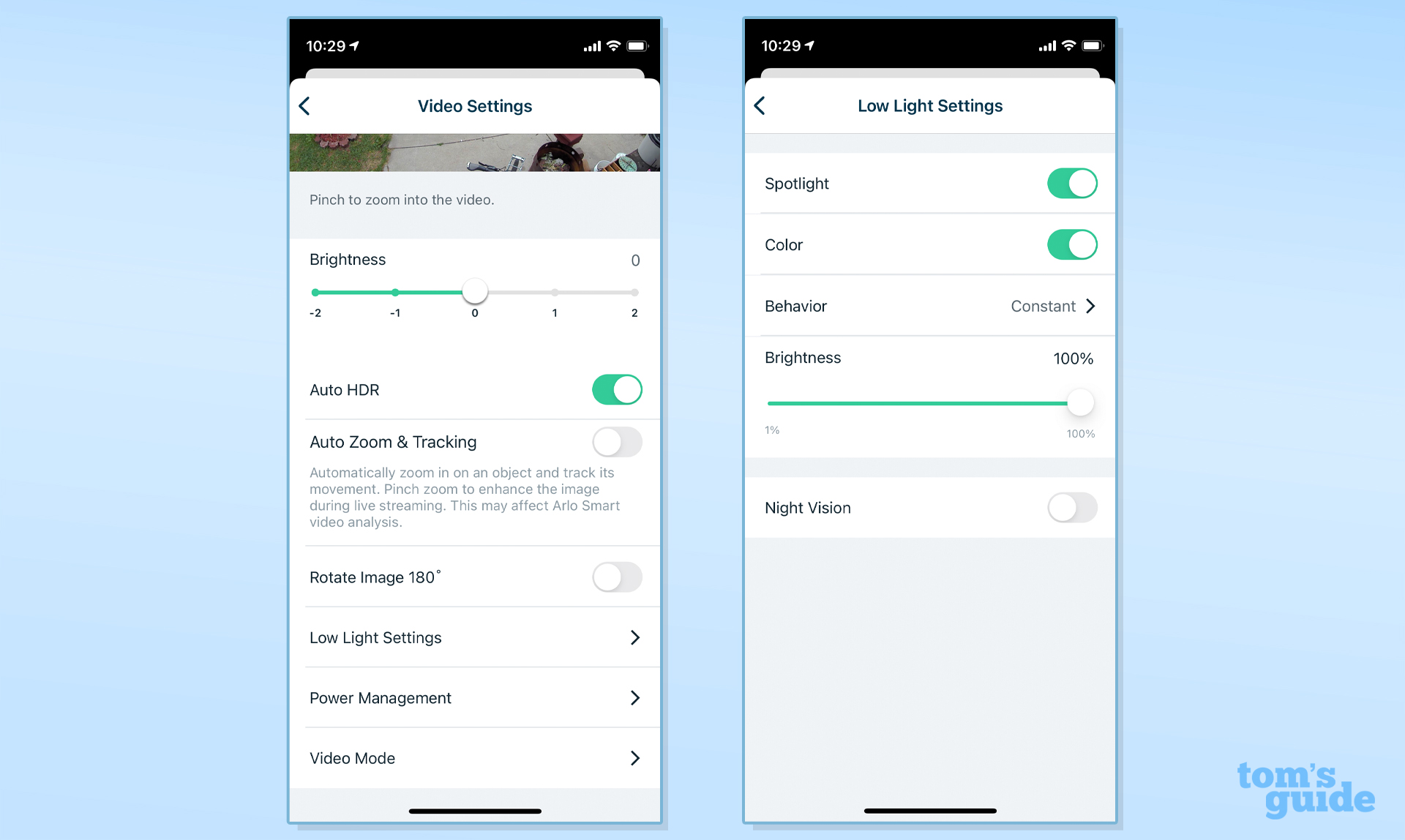
Overall, night vision aside, video quality at least matches other 2K smart home cameras, which means it’s good enough to make out faces the camera captures, but unless you have it mounted low and very close to the street or pointed at your driveway, I wouldn’t count on it to capture any license plate numbers—details are simply too far gone once you get a couple dozen feet away from the camera.
Arlo Pro 4 Review: Battery Life and Wi-Fi
Arlo promises up to 6 months of battery life, which is typical for this type of camera, and like other cameras, this very much depends on how your settings are tweaked and the activity level of the environment being monitored—a low-activity area like a back yard might almost never record anything, where a porch-mounted cam with a clear sightline to a busy sidewalk and street may record several videos a day, necessitating much more frequent charging. This isn’t a problem, of course, if you have a spare battery always on the charger and the camera is easily reachable, but if you’ve mounted it somewhere you need to climb to, you’ll want to either restrict recording, consider buying a solar panel or run it in wired mode.
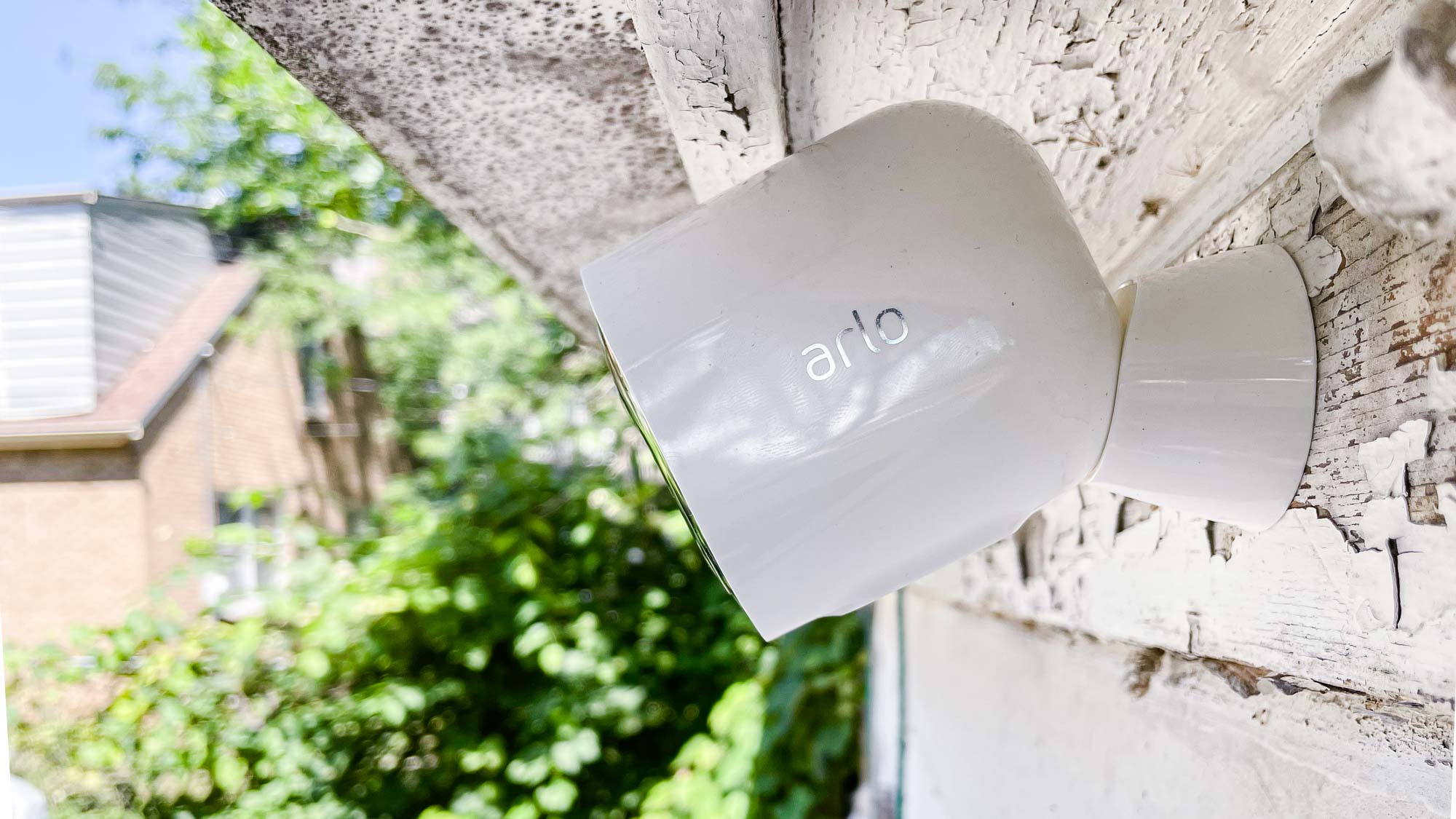
The Arlo Pro 4 did not seem to have any issues maintaining a connection to my network; like so many other smart home devices, it lives solely on the 2.4 GHz band, and uses the 802.11n, or WiFi 4 standard, which is now a few iterations of the WiFi protocol behind. The benefit of running on the 2.4 GHz band is that you don’t have to worry about range limitations, but while it may be fast enough to quickly transfer highly-compressed video over the network—Arlo requires a minimum home upload speed of 2 Mbps—I would still love to see more security camera makers support WiFi 5, or even take advantage of the increased bandwidth, battery-saving features, and crowded-network mitigations afforded devices by the WiFi 6 or 6E standards.
Arlo Pro 4 Review: Features
The Arlo Pro 4 has many of the same features we’ve come to expect from even the lower end of smart home cameras. You can set up activity zones with eight points of articulation rather than just a square. With up to 5 zones per camera, it’s easy to capture activity from only the areas you want covered. The camera also comes with 4 default modes—Armed, Disarmed, Schedule, and Geofencing. Though I had initial trouble with Geofencing, which Arlo confirmed to be a known issue, a subsequent firmware update appeared to fix it, and the feature worked quite well.

The Arlo Pro 4 offers cloud-based detection and recording based on what type of object it’s seeing, allowing you to only record people, vehicles, or animals, as well as simply recording any detected motion. While you can get this feature with this level of granularity with other cameras, what you can’t get from other companies (at least, not yet) is package detection: a feature that specifically notifies you when the camera detects the telltale sign of that particular brown color that defines the cardboard packages that so many of us now have coming on a weekly, if not daily, basis.
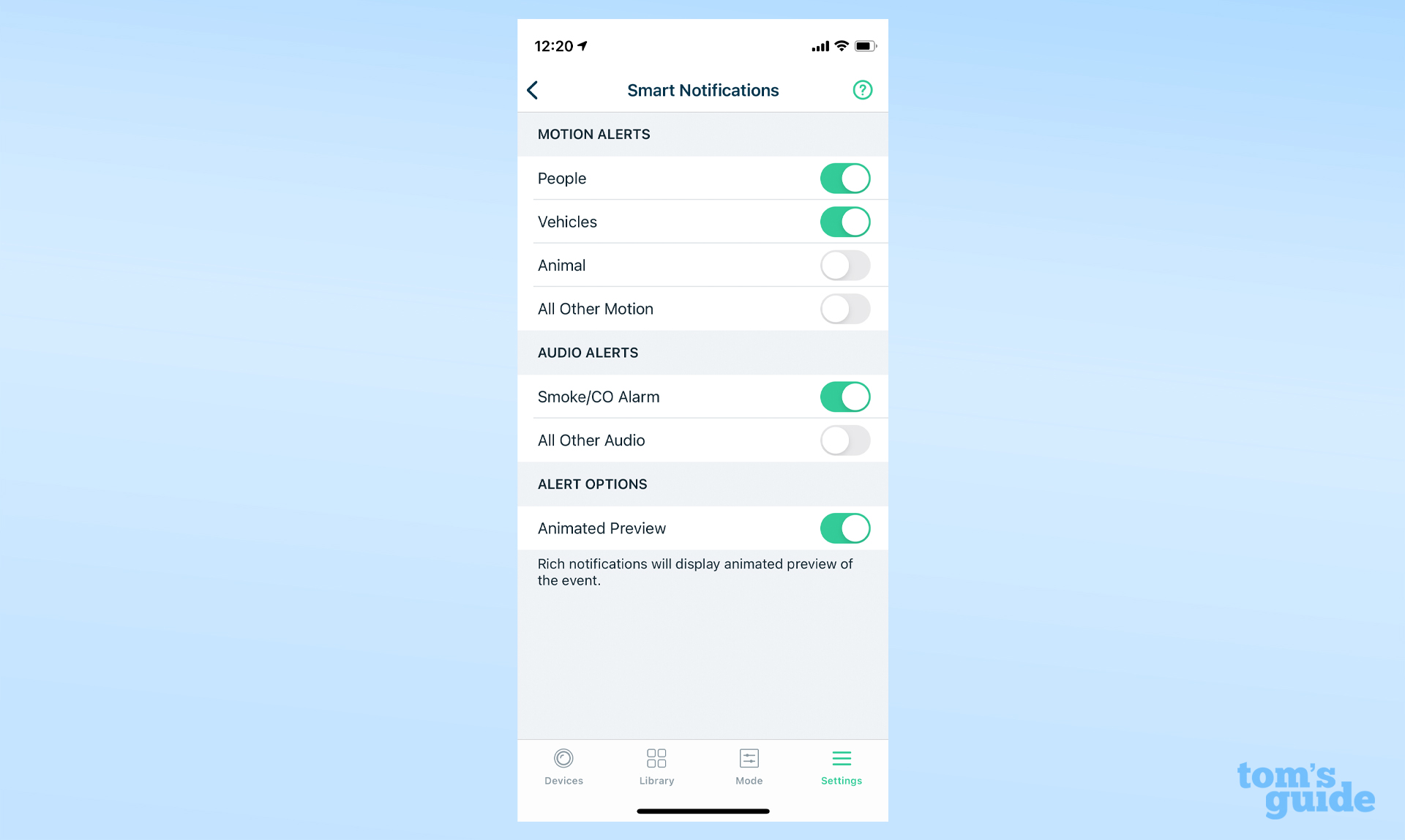
Another feature unique to Arlo’s suite of cameras—and one I’m particularly intrigued by—is the Smoke/CO alarm. With this setting, if your camera is within 2 feet of a CO or Smoke alarm, your camera will alert you if it goes off. It’s perhaps not as ideal as an actual smart smoke detector, but in the absence of one, this could be a very handy backup option for when you’re not home. There is also a toggle for “All Other Audio,” in case you want it to start recording any time there’s noise while you’re away. This feature, along with other type-specific motion alerts, is found under Smart Notifications. Here you can also find an Animated Preview option, which gives you rich, animated notifications, so that you can see a brief animation of the triggering activity, helping you determine whether you need to actually check the camera or perhaps need to use the emergency feature found in the top right of the screen.
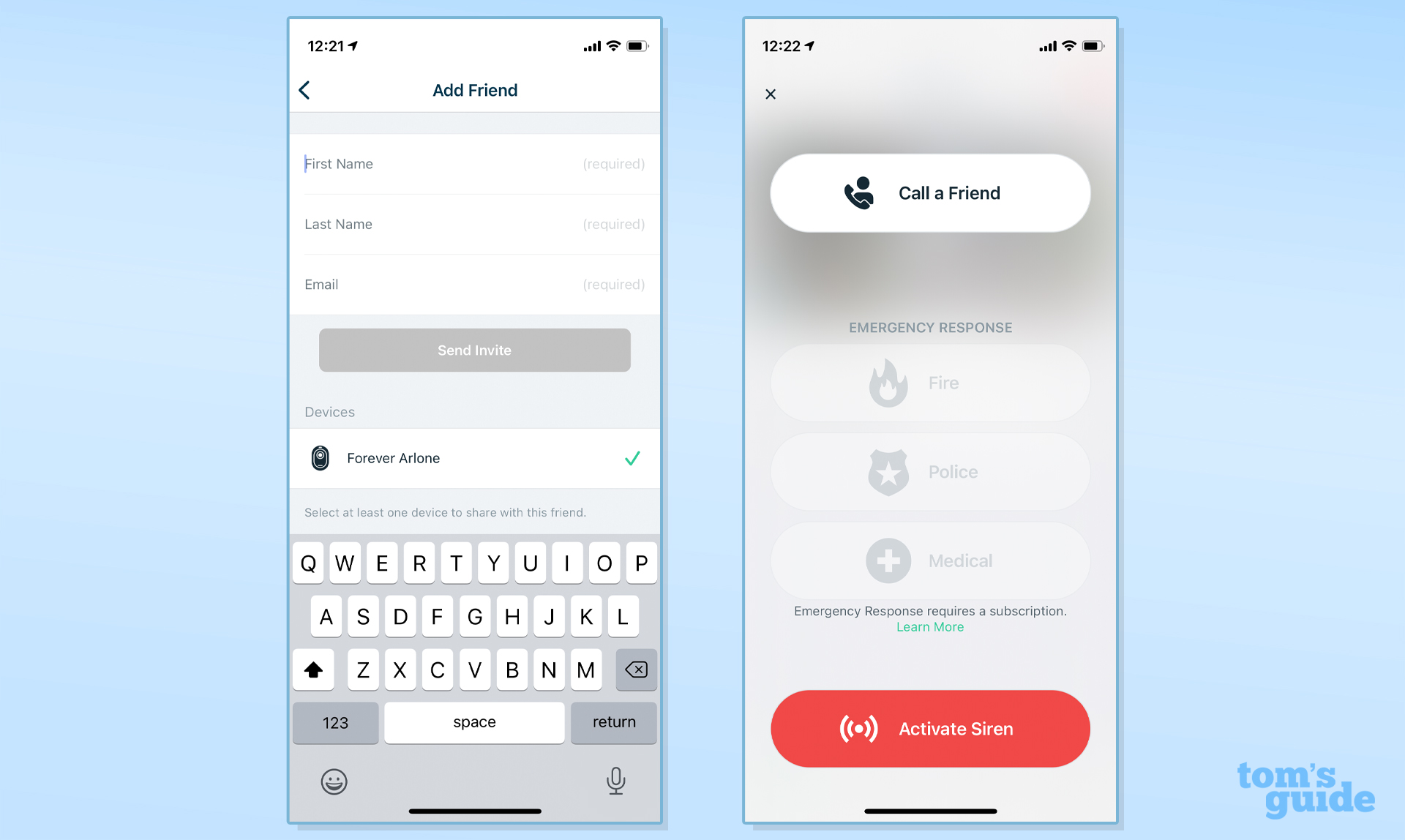
Speaking of which, Arlo’s emergency response feature is a tidy little screen that lets you quickly call a friend you’ve entered previously into the Arlo “Call a Friend” screen, potentially saving crucial time if you have a neighbor or nearby friend you’d like to check on your home. Additionally, for Arlo Plus members, you can contact other emergency services from this screen, putting help just two taps away from the Device screen of the app. While you can obviously do this with your phone anyway, it’s nice to have the option right there; although, I do feel like this feature should just be a part of the app regardless of subscription status. In fact, most of these features are only available if you have a subscription, which is a shame for those who prefer to use local storage for their security videos.
Arlo Pro 4 Review: App
Overall, I found the app to be clean and approachable, and generally thought the right options were surfaced in the right places, although it did sometimes suffer the same pitfalls other smart home devices can. Occasionally, it can be confusing where you need to go to find some options, but for the most part, the global settings redirected you to the specific camera for that setting.
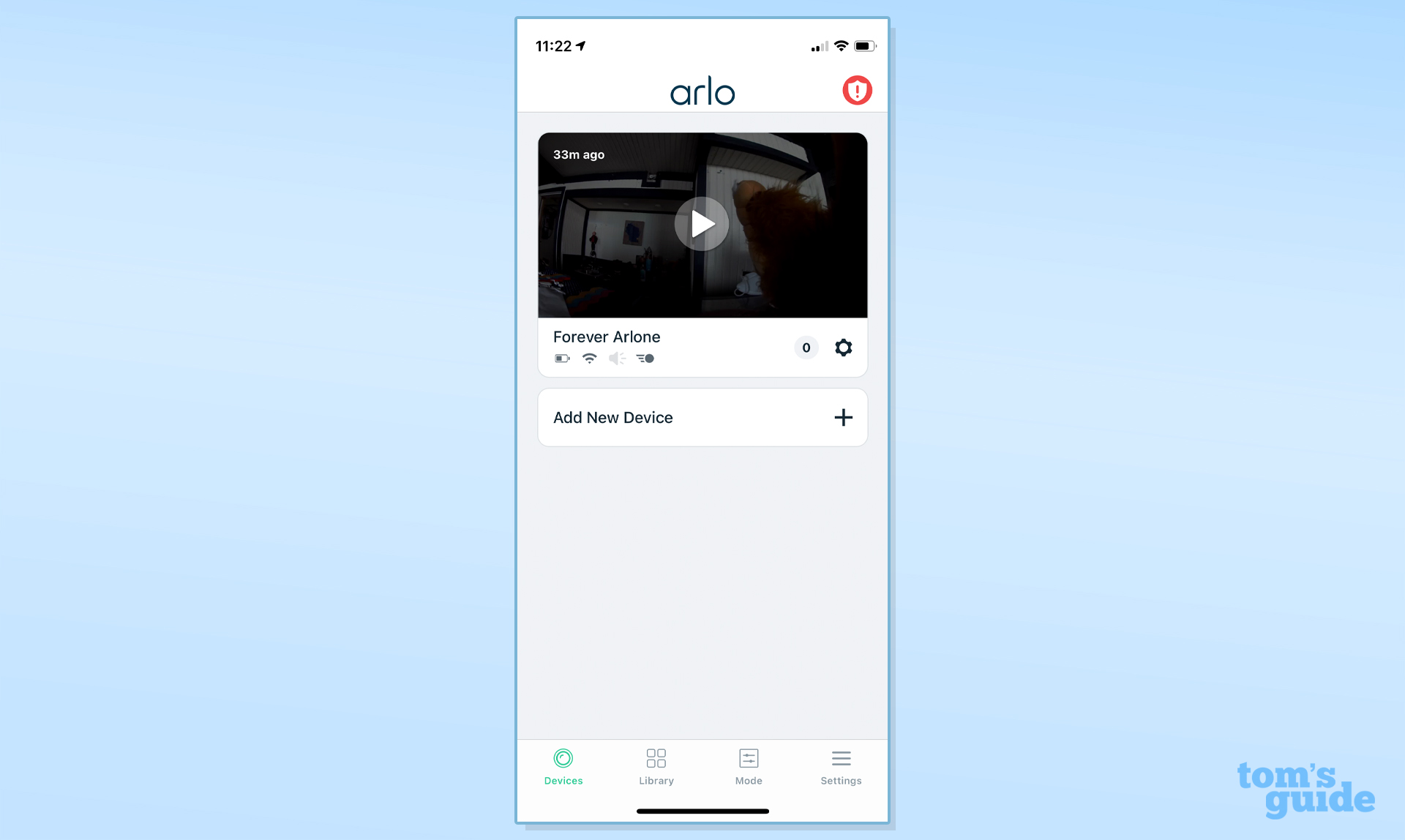
I was disappointed by the amount of time it took live video to load in the app—when receiving notifications of motion detected by the camera, it took usually around 6 or 7 seconds to load the video. This may not seem like a long time, but it feels endless when compared with the almost-instantaneously-loading video feeds of well-placed HomeKit Secure Video cameras like the Eufycam 2C Pro or the very quick-loading Ring Stick-Up Cam.
Security-wise, Arlo does provide for 2-step verification, either via a code texted or e-mailed to you, or by setting a trusted device; the latter of these three options is a proper form of 2-Factor Authentication, and recommended over the sms option because of certain vulnerabilities inherent in that form of verification.
Arlo Pro 4 Review: Smart Home Integration
Arlo provides for a nice, broad range of smart home integrations, supporting Amazon, Google, and Apple’s ecosystems, as well as IFTTT. Almost all of these can be had out of the box, but notably Apple HomeKit only works if you have an Arlo SmartHub, and even then, it is only compatible with HomeKit, rather than HomeKit Secure Video—an important distinction that means the difference between recording video using your iCloud account and simply having access to the camera via the Home app.
In my experience, Alexa provides the best automation experience where the camera is concerned, and that was true here, with Google Home letting IFTTT make up for its deficiencies in automation triggers. I was unable to test HomeKit with this camera, as I did not have access to a SmartHub or Base Station.
Arlo Pro 4 Review: Storage and subscription fees
Like Ring, Arlo is at its best when you use one of its subscription plans, which break down as follows: $2.99/month for a single camera with Arlo Secure, $9.99 for unlimited cameras with Arlo Secure, or $14.99 for Arlo Secure Plus, which likewise allows unlimited cameras.
The Secure plan lets you store unlimited up-to-2K resolution videos for 30 days, while the Secure Plus Plan ups max resolution to 4K — you should only bother with this if you have the Arlo Ultra or Arlo Ultra 2.
Both Secure and Secure Plus give you access to many features not offered on cameras without a subscription, while Secure Plus gives you the added bonus of the Emergency Response calls. Other features only available with a subscription include the ability to save videos, rich notifications, smart object detection, activity zones, Smoke/CO Alarm Detection, and more.
Without a 4K camera, the addition of the Emergency Response call buttons doesn’t seem worth the extra $4.99/month, but that’s purely a matter of personal preference.
There are also Continuous Video Recording (CVR) plans, which are what they sound like—24/7 recordings that can be accessed for 14 or 30 days, with pricing starting at $9.99 for 14-day storage for a single camera with an additional $4.99 for each extra camera—those values are of course doubled for 30-day storage. You’ll also need to run the cameras in wired mode to take advantage of CVR. This is a pretty unique option that goes a long way towards bridging the gap with the kind of old-school IP cameras that many people stand by, although I suspect that crowd would be nonplussed without a local storage version of this option, which does not exist—not to mention the lack of ability to run ethernet to the camera.
Where Arlo departs from Ring is in offering local storage using its SmartHub or Base Station. So equipped, your camera communicates with your network with one of those devices, and you can use your own storage, in the form of a USB-connected hard drive or thumb drive. You’ll unfortunately lose some of the fancier features like smart detection of people or vehicles, activity zones, and rich notifications, but you will still have two-way audio and Auto Zoom and Tracking. Still, at that point, its value proposition drops significantly, so if you want local storage only, I’d look elsewhere.
To see how Arlo’s plans compare to Ring and others, check out our guide to the best security camera cloud storage plans.
Arlo Pro 4 Review: Bottom Line
If you’re more concerned about fancy features than whether you have to pay a monthly fee to access your features, the Arlo Pro 4 is a pretty good option. The camera is well-built, with clever mounting solutions and good accessory options. Video is on the higher end for its market, and it has plenty of cool functionality to make it one of the more configurable smart home security cameras out there.
However, the Arlo Pro 4 doesn’t offer any local storage unless you purchase the SmartHub separately, which means that you won’t be able to save any video in the event your internet connection goes down. Among the best outdoor security cameras, the EufyCam 2 may have a lower resolution — 1080p — but it’s considerably less expensive, and comes with local storage. Still, the Arlo Pro 4 has a great feature set and plenty else to recommend it — if you don’t mind the subscription.
